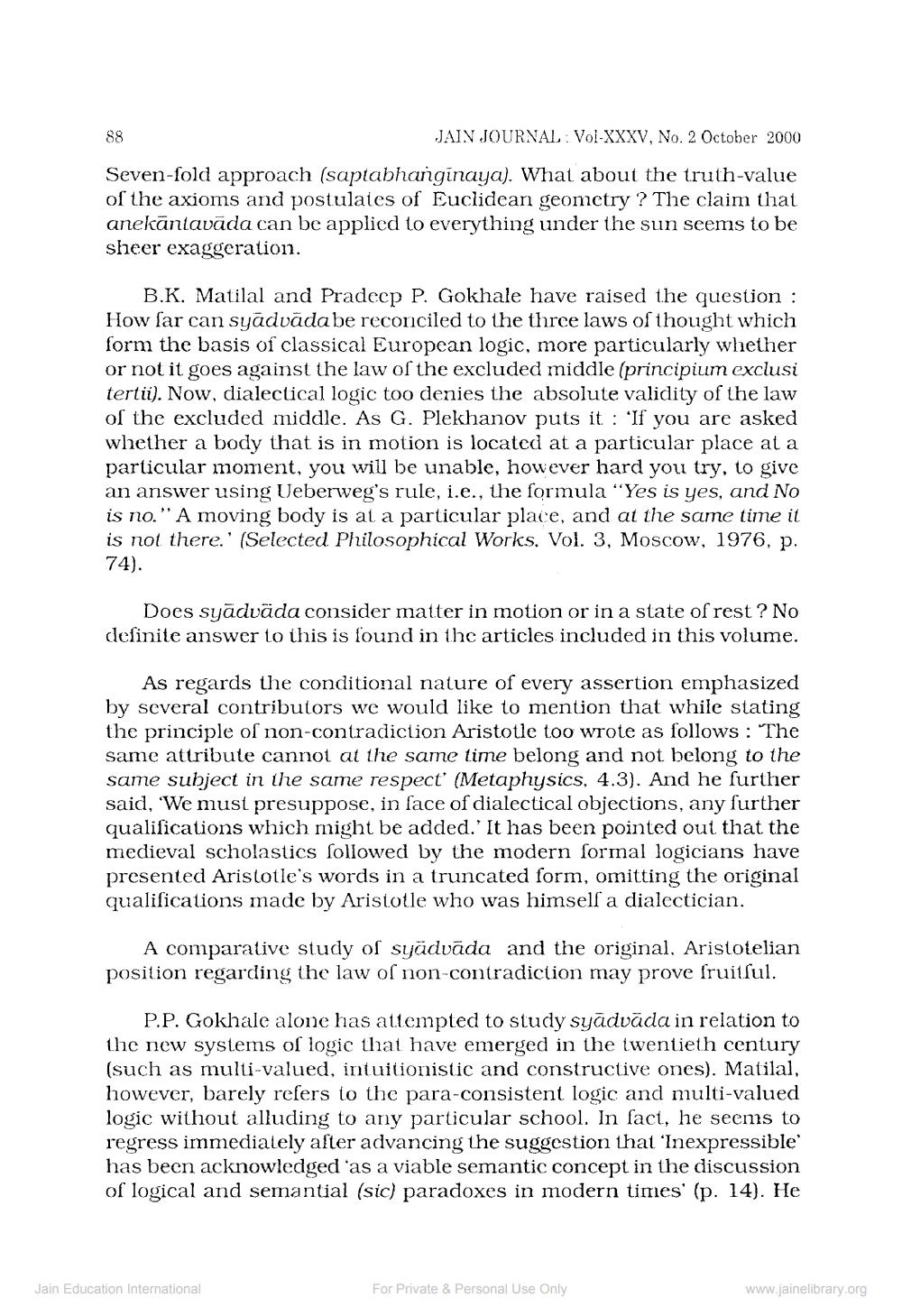________________
JAIN JOURNAL Vol-XXXV, No. 2 October 2000 Seven-fold approach (saptabhanginaya). What about the truth-value of the axioms and postulates of Euclidean geometry? The claim that anekāntavāda can be applied to everything under the sun seems to be sheer exaggeration.
88
B.K. Matilal and Pradeep P. Gokhale have raised the question: How far can syadvada be reconciled to the three laws of thought which form the basis of classical European logic, more particularly whether or not it goes against the law of the excluded middle (principium exclusi tertii). Now, dialectical logic too denies the absolute validity of the law of the excluded middle. As G. Plekhanov puts it: 'If you are asked whether a body that is in motion is located at a particular place at a particular moment, you will be unable, however hard you try, to give an answer using Ueberweg's rule, i.e., the formula "Yes is yes, and No is no." A moving body is at a particular place, and at the same time it is not there.' (Selected Philosophical Works. Vol. 3, Moscow, 1976, p. 74).
Does syädväda consider matter in motion or in a state of rest? No definite answer to this is found in the articles included in this volume.
As regards the conditional nature of every assertion emphasized by several contributors we would like to mention that while stating the principle of non-contradiction Aristotle too wrote as follows: The same attribute cannot at the same time belong and not belong to the same subject in the same respect' (Metaphysics, 4.3). And he further said, 'We must presuppose, in face of dialectical objections, any further qualifications which might be added.' It has been pointed out that the medieval scholastics followed by the modern formal logicians have presented Aristotle's words in a truncated form, omitting the original qualifications made by Aristotle who was himself a dialectician.
A comparative study of syädvada and the original. Aristotelian position regarding the law of non-contradiction may prove fruitful.
P.P. Gokhale alone has attempted to study syādvāda in relation to the new systems of logic that have emerged in the twentieth century (such as multi-valued, intuitionistic and constructive ones). Matilal, however, barely refers to the para-consistent logic and multi-valued logic without alluding to any particular school. In fact, he seems to regress immediately after advancing the suggestion that 'Inexpressible' has been acknowledged 'as a viable semantic concept in the discussion of logical and semantial (sic) paradoxes in modern times' (p. 14). He
Jain Education International
For Private & Personal Use Only
www.jainelibrary.org




